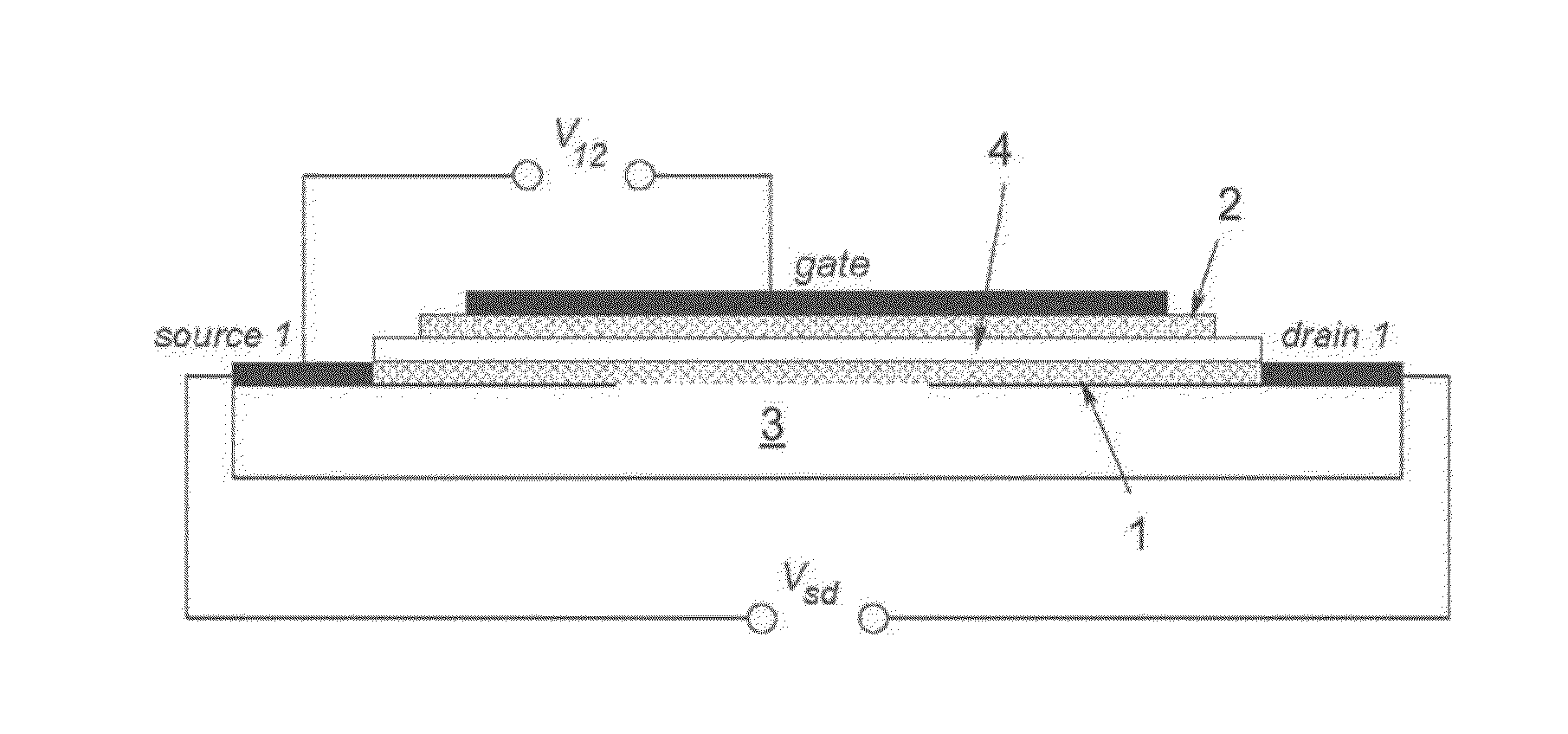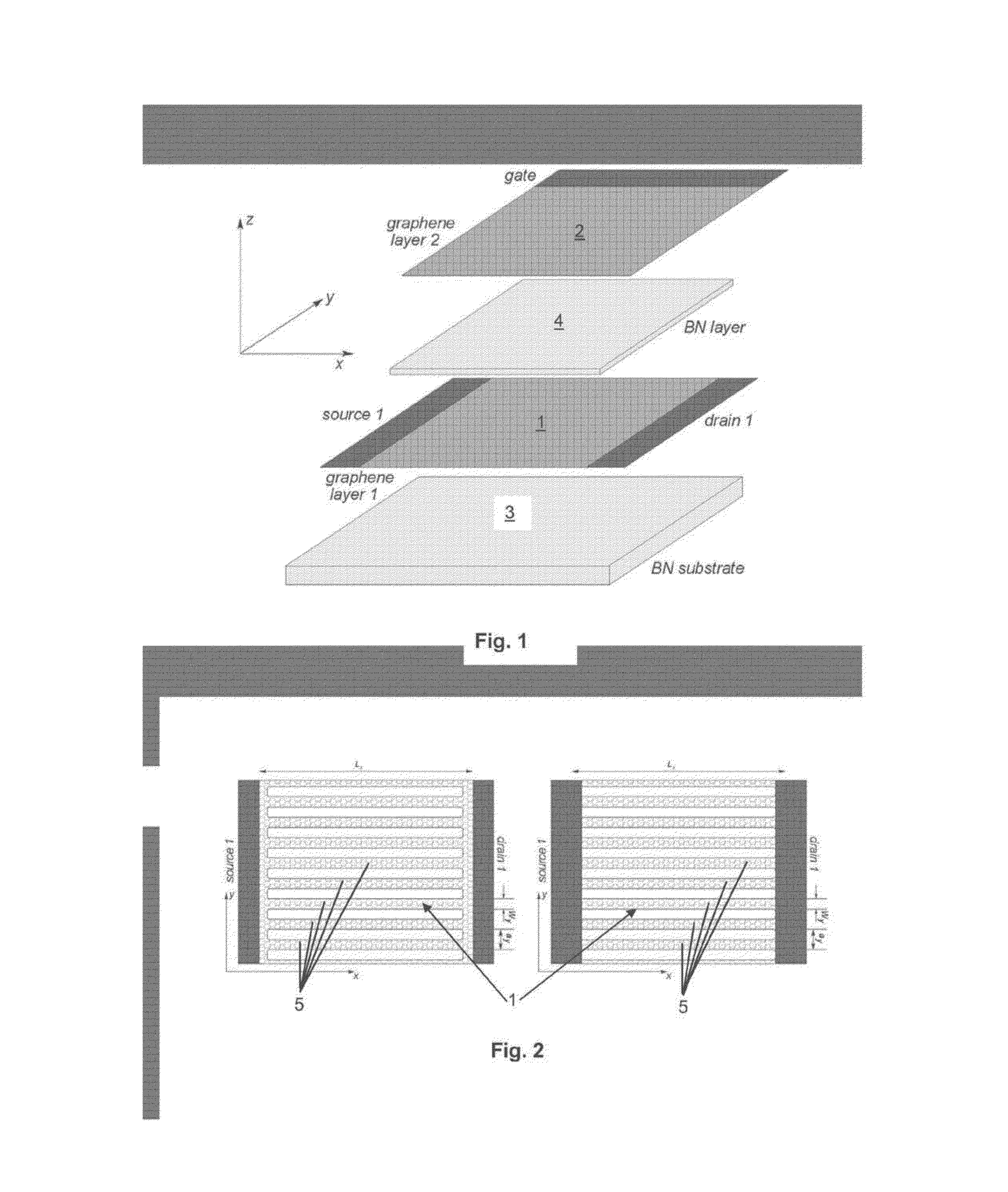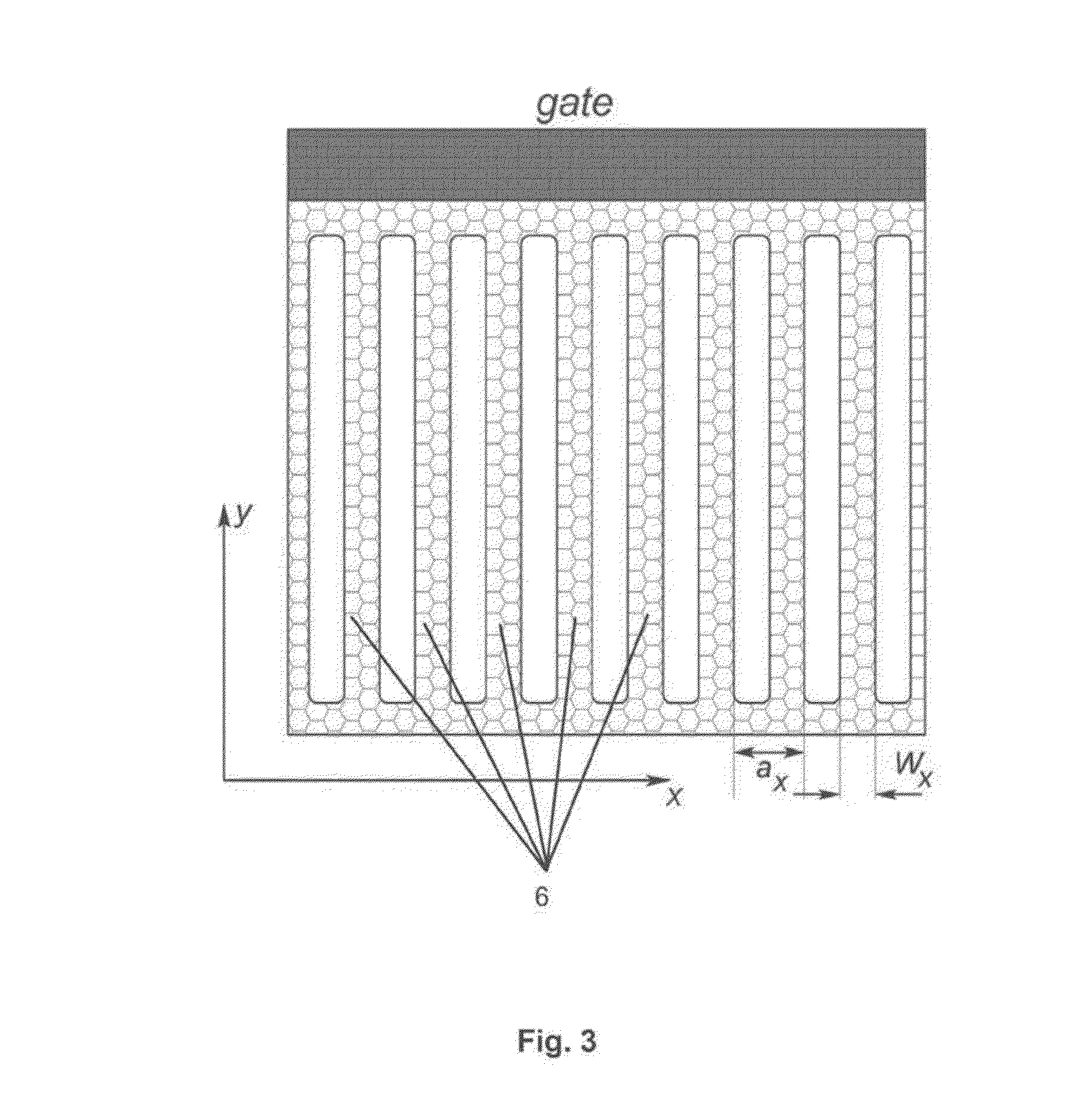Graphene-based nanodevices for terahertz electronics
- Summary
- Abstract
- Description
- Claims
- Application Information
AI Technical Summary
Benefits of technology
Problems solved by technology
Method used
Image
Examples
first embodiment
[0032]FIG. 8: the nanodevice according to the second aspect of the invention having a one-layer graphene structure with a modulated width of stripes in the transversal direction y.
second embodiment
[0033]FIG. 9: the nanodevice according to the second aspect of the invention having a one-layer graphene structure with an array of holes producing a modulation of the width of graphene stripes in the transversal direction y.
[0034]FIG. 10: Schematic illustration of a thin bended graphene-based nanodevice according to the invention focussing the emitted terahertz radiation to a focus of radiaton.
[0035]FIG. 1 shows a preferred embodiment of a basic design of the claimed nanodevice. The whole structure lies on a substrate 3 (marked as “BN substrate” in FIG. 1), which can be made out of any dielectric material, e.g. SiO2 or SiC, but the best one would be the hexagonal (graphitic) boron nitride (h-BN). On the substrate lies a first graphene layer marked as “graphene layer 1” in FIG. 1. This layer is structured as shown in FIG. 2 and has two longitudinal ends connected with metallic contacts “source1” and “drain1”, respectively. The first graphene layer 1 has the form of an array of narro...
PUM
| Property | Measurement | Unit |
|---|---|---|
| width | aaaaa | aaaaa |
| grating period | aaaaa | aaaaa |
| gate voltage | aaaaa | aaaaa |
Abstract
Description
Claims
Application Information
 Login to View More
Login to View More - R&D
- Intellectual Property
- Life Sciences
- Materials
- Tech Scout
- Unparalleled Data Quality
- Higher Quality Content
- 60% Fewer Hallucinations
Browse by: Latest US Patents, China's latest patents, Technical Efficacy Thesaurus, Application Domain, Technology Topic, Popular Technical Reports.
© 2025 PatSnap. All rights reserved.Legal|Privacy policy|Modern Slavery Act Transparency Statement|Sitemap|About US| Contact US: help@patsnap.com



